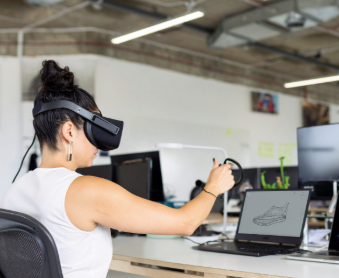Virtual Reality (VR) is rapidly transforming education by offering immersive and interactive experiences that support deeper learning. When paired with personalized learning strategies, VR can create tailored environments that align with each student’s unique learning path, interests, and pace. This combination offers a powerful approach to enhance engagement, comprehension, and student ownership of learning.
The Role of Virtual Reality in Education
VR provides simulated environments where learners can explore, experiment, and engage with content in ways traditional classrooms may not allow. From walking through ancient civilizations to manipulating complex molecules, VR allows for experiences that are hands-on, memorable, and adaptable to different learning styles.
How VR Supports Personalized Learning
1. Tailored Learning Experiences
VR applications can be designed to adapt to student progress. For example, virtual labs can offer varying levels of difficulty, allowing learners to advance as they master each concept. This flexibility ensures that students receive the right level of challenge and support.
2. Self-Paced Exploration
With VR, students can explore topics at their own speed. Whether revisiting complex scenes or advancing quickly through familiar material, learners maintain control of their journey. This self-pacing encourages independence and confidence.
3. Engaging Multiple Learning Styles
VR appeals to visual, auditory, and kinesthetic learners by combining sound, imagery, and interactivity. For students who struggle with traditional instruction, VR can present information in alternative formats that resonate more effectively.
4. Real-Time Feedback and Data
Many VR platforms include real-time performance tracking, which provides immediate feedback. Educators can use this data to personalize instruction and support students with timely interventions.
5. Safe Space for Practice and Growth
VR environments allow learners to practice skills, solve problems, and even fail without real-world consequences. This fosters a safe atmosphere for experimentation and growth, which is essential for personalized learning.
Implementing VR in Personalized Learning Environments
- Choose purpose-driven VR content: Select experiences that align with curriculum goals and support personalized objectives.
- Provide guided reflection: After VR sessions, ask students to reflect on their learning and how it connects to their goals.
- Ensure accessibility: Make sure all students have equitable access to VR tools and provide alternatives when needed.
- Support teacher training: Educators need professional development to integrate VR meaningfully and effectively in personalized instruction.
Final Thoughts
Virtual Reality is more than a novelty in education—it’s a dynamic tool that, when thoughtfully applied, enhances personalized learning by offering immersive, flexible, and student-centered experiences. As technology continues to evolve, VR opens new doors for creativity and inclusivity in the classroom.
By merging the adaptability of personalized learning with the innovation of VR, educators can inspire deeper engagement and help students become active, motivated participants in their own learning journeys.













